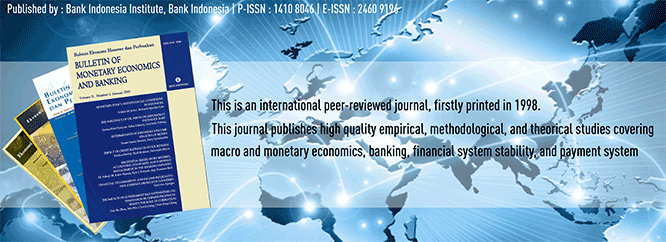
Document Type
Article
Abstract
This research attempts to analyze possible relationship between financial depth and financial access indicators with poverty in Indonesia. Financial depth indicators include the ratio of saving over gross domestic regional products and the ratio of credit over gross domestic regional products. Financial access indicators include the number of banks and number of cooperatives, while poverty is measured by poverty headcount ratio. This research is utilizing panel provincial level data in Indonesia consisting of 33 provinces for the period of 2007 to 2015 using OLS estimation with fixed and random effect method. The main findings of this research is that financial development variables showed negative and significant relationship with poverty, confirming the contribution of financial depth and financial access in reducing poverty in Indonesia. However, the saving variable showed contradictory result, suggesting that in regions where saving rate is high, poverty rate tend to be high. The possible explanation is that consumption of private and household sector in the research period contribute significantly to Indonesian GDP, while the financial resources obtained from saving is not channeled to the pro poor investment. Therefore, the effect of consumption is more effective in reducing poverty than the effect of saving. This research will provide academic evidence for the policy makers in implementing financial inclusion policy in Indonesia with the objective of improving the quality of financial services to help alleviate poverty.
Recommended Citation
Pasuhuk, Pinkan Mariskania
(2018)
"CONTRIBUTION OF FINANCIAL DEPTH AND FINANCIAL ACCESS TO POVERTY REDUCTION IN INDONESIA,"
Bulletin of Monetary Economics and Banking: Vol. 21:
No.
1, Article 7.
DOI: https://doi.org/10.21098/bemp.v21i1.892
Available at:
https://bulletin.bmeb-bi.org/bmeb/vol21/iss1/7
First Page
95
Last Page
122
Creative Commons License

This work is licensed under a Creative Commons Attribution-NonCommercial 4.0 International License
Country
Indonesia
Affiliation
Regional Development Planning Agency (Bappeda) Yogyakarta







